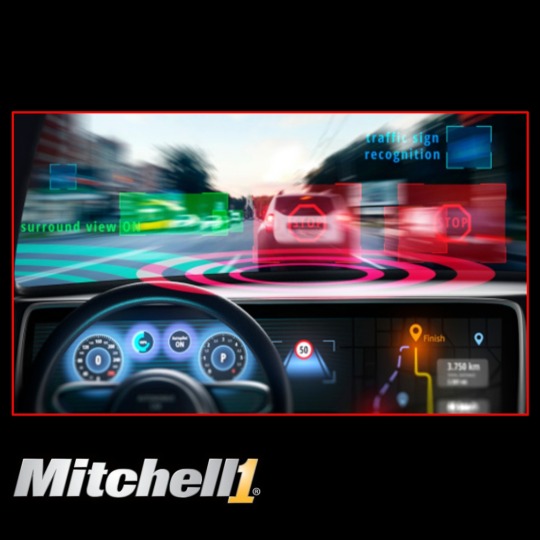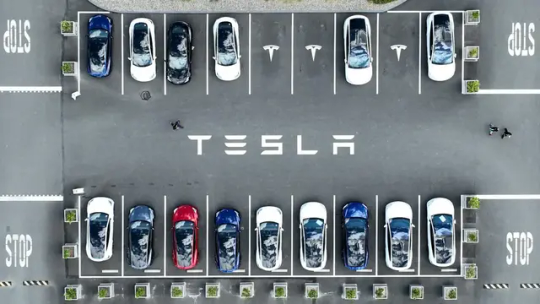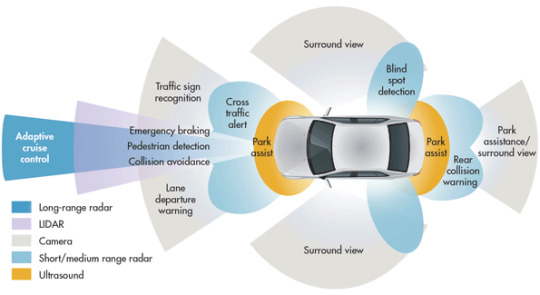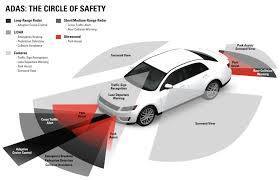#Advanced Driver Assistance Systems
Text
Impressive Features of the 2023 RAM 1500

1. A V8 With 702 Horsepower
Although this edition of the Ram 1500 offers plenty of exciting engine options, the 6.2-liter HEMI V8 that’s available for the TRX model has easily been the one that’s garnered the most attention. This supercharged engine produces an outstanding 702-horsepower output alongside 650 pound-feet of torque, giving you all the power you need for high-speed desert racing and heart-pounding acceleration.
2. Infotainment for All to Enjoy
Keeping everyone entertained while helping you navigate your way to destinations, the Uconnect 5 NAV infotainment system provides access to music, SiriusXM radio channels, and GPS navigation. It’s also compatible with both Apple CarPlay and Android Auto, so you can connect your phone to this system to make hands-free calls or access select media files.
3. A Cruise Control for Off-Road
Selec-Speed Control is a unique cruise control for off-road terrains, which is available for most trims and standard on Rebel 4×4 models. When traversing at slow speeds, this system can automatically apply brake pressure and adjust the vehicle’s engine torque, allowing you to focus more on steering and your surroundings.
4. A Convenient Cargo Organizer
When storing cargo in the bed of the truck, the available RamBox Cargo Management System has multiple functions to make this process easier. In addition to offering separate compartments, so you can easily organize and separate cargo, it also functions as a mobile cooler, as it can be filled with ice and is drainable. Best of all, it comes with an auxiliary outlet that provides up to 115 volts and 400 watts of power.
5. Information on Your Windshield
This pickup’s Head-Up Display is a truly innovative feature, as it allows you to see important information and notifications on the lower area of your windshield. This can help prevent distractions by allowing you to keep your eyes facing forward instead of having to continually look down at an instrument cluster.
Capable of tackling tough terrains and with the latest innovative tech features inside its comfortable cabin, this edition of the 1500 sets a new standard for all other pickups to follow. Come see what else separates it from the others by reaching out to us today and scheduling your test drive at Devils Lake Chrysler Dodge Jeep Ram.
#2023 RAM 1500#advanced driver assistance systems#comfort#convenience#design#durability#efficiency#entertainment system#exterior#Features#impressive#interior#luxury#navigation system#Off-road capabilities#Performance#pickup truck#RAM 1500#Safety#Technology#towing capacity#truck
2 notes
·
View notes
Text
https://www.kpit.com/solutions/autonomous-driving-adas/
Autonomous Driving & ADAS - KPIT
KPIT offers Software Integration for ADAS & AD. With 10+ years of experience in Autonomous Driving, KPIT is a pioneer in advanced driver assistance system Engineering
#Adas#adas system#advanced driver assistance systems#Autonomous Driving and ADAS#Autonomous Driving#System Engineering#Model based system engineering#Autonomous Driving & ADAS#autonomous vehicle solutions#mobility solutions automotive
0 notes
Text

As ADAS repairs are becoming the new norm, you're probably wondering: How is this innovative technology evolving? What are the best practices for accurate repairs? Dive deep into the world of Advanced Driver Assistance Systems (ADAS). 💪 Learn what it entails, how it works, and the implications for drivers & repair technicians!
➤ https://www.m1repair.com/mitchell1-prodemand-revolutionizing-safe-driving-the-advantages-of-adas
GET STARTED NOW with a 14 day free trial of Mitchell 1 ProDemand auto repair information. No obligation. No credit card. No risk. It's 100% FREE!
#adas#advanced driver assistance systems#mitchell1#mitchell 1#prodemand#auto repair#car repair#auto repair information#automotive#auto mechanic#car care#prodemand free#ondemand#mitchell prodemand#prodemand free trial#auto repair shop
1 note
·
View note
Text
Boost Automotive Experience with ADAS Technology
Step into the realm of Advanced Driver Assistance Systems (ADAS) where state of the art technology meets the crucial aspects of road safety and driving convenience. In this blog, we will take a dive into the captivating world of ADAS and examine how it is transforming the automotive industry.
What is ADAS technology?
ADAS, or Advanced Driver Assistance Systems, is a set of technology features installed in vehicles to assist drivers while driving. It aims to enhance road safety and make driving more convenient. ADAS relies on sensors, cameras and intelligent algorithms to detect potential hazards and promptly alert drivers while also providing necessary measures. These features can include Adaptive Cruise Control, Lane Departure Warning and Night Vision Systems, among others.
The field of Advanced Driver Assistance Systems is constantly evolving as it strives to make driving both safer and enjoyable. It serves as a stepping stone towards autonomous driving where vehicles can operate without human intervention. Governments play a role in promoting Advanced Driver Assistance Systems adoption through regulations and standards, and consumer education is crucial for effectively using these features.
How does ADAS work?
Let’s take a look at how Advanced Driver Assistance Systems works:
Sensors: This systems come with different types of sensors like radar and lidar that can identify objects in the vicinity of the vehicle. So, These sensors gather continuous data about the surroundings of the car.
Cameras: Cameras are an essential part of these technology. They capture visual information, including road signs, lane markings, and other vehicles, helping the system to understand the road better.
Data Processing: The data from sensors and cameras are processed in real time by the system. Powerful onboard computers analyse the data to identify potential hazards and determine appropriate actions.
Alerts and Warnings: Whenever system identifies a possible hazard, it promptly notifies the driver with timely alerts and warnings. For instance, if the vehicle begins to drift out of its designated lane without activating the turn signal, the Lane Departure Warning feature will alert the driver to steer back into their lane.
Automatic Interventions: In some cases, these can take automatic actions to prevent accidents. For instance, Automatic Emergency Braking (AEB) can apply the brakes if the system senses an imminent collision, helping to avoid or mitigate the impact.
Adaptive Features: Its features are designed to adapt to different driving conditions. For instance, Adaptive Cruise Control automatically modifies the speed of the car to ensure a safe gap is maintained between it and the vehicle in front. It does so even when driving in congested traffic.
Integration of Data: Its systems integrate data from multiple sources to create a comprehensive picture of the driving environment. So, This integration allows the system to make more informed decisions.
What are the different types of ADAS?
Advanced Driver Assistance Systems, comprises various types of technology features that aim to assist drivers and enhance road safety. These features use sensors, cameras, and advanced algorithms to provide helpful aids during driving. Some of the different types of these are:
Lane Departure Warning (LDW): It is an alert system that notifies the driver if the car unintentionally drifts out of its lane without using the turn signal. So, This helpful feature aims to prevent accidents caused by lane departure. It encourages drivers to stay within their designated lanes.
Automatic Emergency Braking (AEB): It is designed to detect potential collisions and apply the brakes automatically to prevent or reduce impact. It proves particularly valuable in emergency situations when drivers might not be able to react swiftly enough.
Blind Spot Monitoring (BSM): It relies on sensors to detect vehicles in those tricky blind spots, areas not directly visible to drivers. By providing warnings or alerts, BSM assists drivers in avoiding risky lane-changing maneuvers and enhances overall safety.
Parking Assistance: This feature assists the driver in parking the vehicle by providing guidance through visual or audio cues. Some systems can even control the steering to help manoeuvre the car into a parking space.
So, These are some examples of the different types of ADAS available and Each feature serves a specific purpose in enhancing driving safety and convenience. In turn, making the road a safer place for all users.
Benefits of ADAS
Enhanced Road Safety
This technology significantly improves road safety by providing timely alerts and interventions to drivers. Features like Automatic Emergency Braking can detect potential collisions and apply the brakes to prevent or mitigate accidents. Lane Departure Warning alerts drivers when they unintentionally drift out of their lane, reducing the risk of lane departure accidents.
Reduced Accidents and Fatalities
The incorporation of ADAS has proven to be effective in decreasing the occurrence of accidents and fatalities on our roads. By supporting drivers and improving their awareness of possible dangers, these systems assist in avoiding collisions and reducing the impact of accidents when they do happen.
Improved Driving Confidence
ADAS technology provides drivers with an extra layer of confidence while driving. Knowing that the system can assist in critical situations, such as emergency braking or collision avoidance, can help drivers feel more secure and comfortable behind the wheel.
Cost Savings on Insurance
With reduced accident frequency and severity, ADAS-equipped vehicles often experience lower insurance claims. As a result, insurance companies may offer discounts or lower premiums for vehicles equipped with ADAS features.
Environmental Impact
ADAS features like Adaptive Cruise Control can help optimise fuel efficiency by maintaining a steady speed and avoiding sudden accelerations and decelerations, contributing to reduced emissions and environmental impact.
Conclusion
In conclusion, ADAS technology is revolutionising the automotive industry by providing a wide range of benefits. From enhancing road safety and reducing accidents to boosting driver confidence and promoting fuel efficiency, this is making driving safer and more enjoyable. Thus, ongoing development and integration of this technology with vehicles emphasise its significance in shaping the future of transportation. As technology progresses it will have a role in enhancing safety and efficiency for all drivers on the road.
For more info: - https://macgence.com/boost-automotive-experience-with-adas-technology/
0 notes
Text
As driving changes in India, there's a big shift happening. ADAS, or Advanced Driver Assistance Systems, is a key part of this change.
read the full blog now -
0 notes
Text
Tesla Speeds Toward Twin Trials Over Autopilot-Related Crashes
Image: Justin Sullivan (Getty Images)
Tesla has certainly been overly ambitious in advertising an Autopilot feature that doesn’t really work, and now it’s facing legal ramifications over its cars’ self-driving capabilities. The company is in the middle of two lawsuits, with trials scheduled for this fall, over crashes that allegedly involved Autopilot leading to deaths.
Tesla Investors Not…

View On WordPress
#Accident#Advanced driver assistance systems#Bill No.#Crime#Disaster#Electric cars#Elon Musk#Full Self-Driving#Gizmodo#Inc.#Law#Micah Lee#Musk#Self-driving car#TESLA#Tesla Autopilot#Tesla Model 3#Tesla Model X#Warning systems
0 notes
Text
Enhancing Eco-driving With Advanced Driver Assistance Systems (ADAS)

Introduction
The car industry is stepping up its efforts to promote environmentally friendly driving habits as the world’s concern for environmental sustainability continues to increase. The incorporation of Advanced Driver Assistance Systems (ADAS) into automobiles is a key advance in this area. The goal of ADAS technologies is to lower emissions while improving safety, convenience, and fuel efficiency.
An important aspect of global energy usage is fuel economy. Utilizing driver feedback to promote eco-driving is one technique to increase fuel economy. Advanced Driver-Assistance Systems (ADAS) may be used to encourage eco-driving, according to new research.
Optimal Energy Management Strategy (Optimal EMS), which maximizes the use of engine and battery power, is another way to increase powertrain efficiency for fixed speeds and increase fuel economy. Engine power control is how optimal EMS works. According to recent studies, combining eco-driving with an Optimal EMS can result in the most improvements.
Ultrasonic sensors, radio detection and ranging (RADAR), light detection and ranging (LIDAR), radio detection and range (RADAR), and other types of image systems are among the sensors employed by advanced driver-assistance systems (ADAS) nowadays for active safety applications.
A key part of ADAS research involves using computer vision to recognize the environment and categorize things in videos. One of the simpler ways to identify the type of item the vehicle is approaching is to utilize a camera. Image capture, pre-processing, segmentation, object detection and tracking, depth estimate, and system control are all steps in the generic object detection pipeline. Recent approaches are investigating deep learning algorithms like convolutional neural networks (CNN) for improved accuracy to more reliably complete the task of object detection.
In this blog, we’ll look at how ADAS encourages eco-driving and how it might transform how we commute while lowering our carbon impact.
1. Understanding Eco-Driving

2. ADAS (Advanced Driver Assistance Systems) Evolution
A group of technologies known as ADAS helps drivers with a variety of vehicle control and safety functions. Due to improvements in sensors, artificial intelligence, and computer capacity, ADAS has substantially changed over time. Adaptive Cruise Control (ACC), Lane Keeping Assist (LKA), Autonomous Emergency Braking (AEB), and Traffic Sign Recognition (TSR) are the most popular ADAS features.
3. ADAS and Eco-Driving Synergy
The adoption of ADAS in vehicles has the potential to significantly improve environmentally-friendly driving habits. Let’s examine some of the methods used by ADAS to create this synergy:
ACC (Adaptive Cruise Control) automatically adjusts the vehicle’s speed to maintain a safe following distance by using sensors to monitor the distance and speed of the vehicle in front of it. ACC helps create a smoother driving experience by preventing sudden accelerations and decelerations, which lowers fuel use and pollutants.
Lane Keeping Assist (LKA): LKA gently corrects the vehicle’s trajectory if it begins to veer out of its lane without using turn signals. It does this by using cameras to monitor lane markings. LKA reduces needless steering adjustments and provides maximum fuel economy by keeping the car centered in its lane.
Autonomous Emergency Braking (AEB): AEB systems automatically apply the brakes to avoid or lessen impacts when they identify impending collisions with objects or pedestrians. This function increases safety and curbs aggressive driving, which can increase fuel usage.

4. Traffic Sign Recognition (TSR): TSR uses cameras to recognize traffic signs, including signs that indicate speed limits and other road rules. TSR encourages adherence to speed restrictions and aids in lowering fuel usage by warning the driver of the current speed limits and other traffic circumstances.
5. Predictive Energy Management: To improve energy management, certain ADAS systems combine navigation data, real-time traffic data, and machine learning algorithms.
These systems are capable of determining the most energy-efficient routes while accounting for factors like terrain, traffic, and other factors.
4. Artificial Intelligence’s (AI) Function

For ADAS technology to be successful, AI is essential. ADAS systems may continuously learn from data and develop their decision-making skills thanks to machine learning algorithms. As AI develops, ADAS may become more precise, flexible, and responsive, improving eco-driving techniques.
5. Obstacles and Prospects
Despite ADAS’s excellent promise for eco-driving, there are still a number of obstacles to overcome. These include the requirement for infrastructure modifications to support these sophisticated systems, technological constraints, and data privacy issues. Additionally, problems with widespread acceptance and price may make ADAS inaccessible to some drivers.
The outlook for ADAS and eco-driving, though, is still positive. Costs will probably go down as technology develops, making ADAS more affordable for the general public. Moreover, ADAS will be essential in maximizing the energy efficiency of electric and hybrid vehicles as their use grows.
Conclusion
In conclusion, ADAS (Advanced Driver Assistance Systems) offer a fantastic chance to encourage environmentally friendly driving habits. ACC, LKA, AEB, and TSR are a few examples of ADAS capabilities that can be integrated into automobiles to improve performance and cut emissions and fuel use. The vision of a greener and more sustainable future for our roads becomes more realistic as AI advances and infrastructure supports these cutting-edge technologies. A crucial step towards a cleaner and more sustainable future is the car industry’s dedication to eco-driving through ADAS.
#Eco-driving#Advanced Driver Assistance Systems#ADAS#artificial intelligence#Optimal EMS#vehicle control and safety functions
0 notes
Text
#Intelligent Car Buying Decision#autonomous driving technology#Infotainment and Connectivity#Advanced Driver Assistance Systems#Electric Powertrains#Cutting-Edge Car Technologies
0 notes
Text
What is ADAS Technology ? - Enhancing Road Safety and Revolutionizing the Driving Experience
🚘 Unleash the Power of ADAS Technology! 🌟
Revolutionize your driving experience and take road safety to the next level with Advanced Driver Assistance Systems (ADAS). 🛡️✨ #ADAS #RoadSafety #DrivingExperience #InnovationUnleashed
In a technologically advanced era, one innovation stands out when it comes to improving road safety and the driving experience: Advanced Driver Assistance Systems (ADAS). These intelligent systems, which are now integrated into modern vehicles, have changed the way we interact with them and navigate the roadways. This essay will go into the world of ADAS technology, investigating its features,…

View On WordPress
#adas#adas cars in india#adas full form#adas meaning#ADAS System#adas system in hindi#adas technology full form#Advanced Driver Assistance Systems
0 notes
Text
Helm.ai Raises $31 Million in Series C Funding Round for Autonomous Vehicle Softwar
Helm.ai Raises $31 Million in Series C Funding Round for Autonomous Vehicle Softwar
Helm.ai is a startup based in Menlo Park, California that is developing software for advanced driver assistance systems, autonomous driving, and robotics. The company recently raised $31 million in a Series C round, led by Freeman Group, pushing its valuation to $431 million.
The company has developed software that can understand sensor data as well as a human, using an unsupervised learning…

View On WordPress
#ACVC Partners#advanced driver assistance systems#Amplo#autonomous driving#autonomous vehicles#commercial partnerships#Freeman Group#funding#Goodyear Ventures#Helm.ai#Honda Motor Co.#neural networks#OEMs#R&D#Series C#software#Sungwoo Hitech#Tier 1 suppliers#unsupervised learning#valuation
1 note
·
View note
Text
How Multimodal Transportation is Changing the Future of Urban Mobility

Today, consumers are increasingly replacing the concept of my vehicle with the concept of a vehicle that comes to me when I want it.
A plethora of options is making multimodality in transportation a daily reality for many. For example, a shopper might pick up an e-scooter waiting on a street corner to drive to a shopping destination, drop it off at the entrance, and then hop on a bus to return home.
This new ecosystem of multimodal transportation is helping people easily get from point A to point B, especially in urban, high-density areas ― unencumbered by the responsibility of vehicle ownership or operation.
Riding the express to success: It’s all about trust
In addition to new business models, transportation technology itself is rapidly evolving. One emerging technology that could be a game changer for multimodal transportation is the autonomous vehicle (AV). The successful integration of multiple supporting technologies will be essential to the success of autonomous vehicles as they are incorporated into various transportation systems.
Reliable data - about the vehicle, its environment and its passengers - is the backbone of a smart, connected mobility ecosystem. However, privacy, consumer safety, and security concerns still need to be addressed.
Overcoming Privacy and Security Barriers to Build Public Trust
Through 'privacy by design' technique - embedding data privacy and security directly in the ecosystem design phase rather than incorporating them as afterthoughts.
When it comes to safety, one puzzle to be solved is localization — knowing exactly where a vehicle is relative to its surroundings. Another is accurate trajectory planning; for example, how a vehicle will make a turn at an upcoming signal or intersection. Solving these two challenges will shed light on how the vehicle will maneuver in a complex, dense urban environment. From there, key technologies such as high-definition maps and remote vehicle control systems that leverage 5G can be developed to refine the interaction between the vehicle and the infrastructure.
Transforming the Industry While Building Public Trust
With decades of experience and core technologies in the automotive industry, Hitachi is deeply engaged in the development of technologies that are driving the multimodal explosion. For example, Hitachi has developed or co-developed in-vehicle weather intelligence, environmentally friendly engine management systems, and stereo cameras for improved automatic emergency braking at intersections.
Directly addressing the issue of public trust, Hitachi has developed both a next-generation smart navigation solution to enhance localization and a high-precision trajectory tracking technology to improve the safety of AVs on public roads.

Many organizations have joined the effort to mass-deploy connected technologies, including AVs, and win consumer confidence. But it’s not yet a fully coordinated effort. At Hitachi, we’ll continue to champion these types of joint efforts while developing innovative technology that can make multimodal or futuristic transportation mainstream.
By leveraging groundbreaking innovation, together we can evolve a reliable, safe and dependable system ― one that the public understands and trusts. When we do, the future of smart mobility will be wide open.
Learn how Hitachi is powering futuristic transportation
Discover how Hitachi is unlocking value for society with Sustainable Innovation in Transportation:
#multimodal transportation#driverless bus#digital technology#smart mobility#sustainable transportation#transportation innovations#autonomous vehicle safety#advanced driver assistance systems#future of mobility#Multimodal Mobility#futuristic transportation#decarbonization#sustainable transport#autonomous vehicles#AV technology#autonomous vehicle technology
0 notes
Text
0 notes
Text
Automotive Advanced Driver Assistance System Market To Witness the Highest Growth Globally in Coming Years

The report begins with an overview of the Automotive Advanced Driver Assistance System Market and presents throughout its development. It provides a comprehensive analysis of all regional and key player segments providing closer insights into current market conditions and future market opportunities, along with drivers, trend segments, consumer behavior, price factors, and market performance and estimates. Forecast market information, SWOT analysis, Automotive Advanced Driver Assistance System Market scenario, and feasibility study are the important aspects analyzed in this report.
The Automotive Advanced Driver Assistance System Market is experiencing robust growth driven by the expanding globally. The Automotive Advanced Driver Assistance System Market is poised for substantial growth as manufacturers across various industries embrace automation to enhance productivity, quality, and agility in their production processes. Automotive Advanced Driver Assistance System Market leverage robotics, machine vision, and advanced control technologies to streamline assembly tasks, reduce labor costs, and minimize errors. With increasing demand for customized products, shorter product lifecycles, and labor shortages, there is a growing need for flexible and scalable automation solutions. As technology advances and automation becomes more accessible, the adoption of automated assembly systems is expected to accelerate, driving market growth and innovation in manufacturing.
The global Advanced Driver Assistance System (ADAS) market size was valued at USD 37.31 billion in 2021 and is projected to grow from USD 43.62 billion in 2022 to USD 124.31 billion by 2029, exhibiting a CAGR of 16.1% during the forecast period.
Get Sample PDF Report: https://www.fortunebusinessinsights.com/enquiry/request-sample-pdf/101897
Key Strategies
Key strategies in the Automotive Advanced Driver Assistance System Market revolve around optimizing production efficiency, quality, and flexibility. Integration of advanced robotics and machine vision technologies streamlines assembly processes, reducing cycle times and error rates. Customization options cater to diverse product requirements and manufacturing environments, ensuring solution scalability and adaptability. Collaboration with industry partners and automation experts fosters innovation and addresses evolving customer needs and market trends. Moreover, investment in employee training and skill development facilitates seamless integration and operation of Automotive Advanced Driver Assistance System Market. By prioritizing these strategies, manufacturers can enhance competitiveness, accelerate time-to-market, and drive sustainable growth in the Automotive Advanced Driver Assistance System Market.
Major Automotive Advanced Driver Assistance System Market Manufacturers covered in the market report include:
Robert Bosch GmbH (Germany)
Continental AG (Germany)
ZF Friedrichshafen AG (Germany)
DENSO CORPORATION (Japan)
Aptiv PLC (Ireland)
Valeo SA (France)
Magna International Inc. (Canada)
Aisin Seiki Co. Ltd (Japan)
Autoliv Inc. (Sweden)
GENTEX CORPORATION (U.S.)
Harman International (U.S.)
Hyundai Mobis (South Korea)
NXP Semiconductor (Netherlands)
Mobileye (Israel)
Panasonic Corporation (Japan)
Renesas Electronics Corporation (Japan)
The advanced driver assistance system covers a wide range of active and passive systems designed to assist the driver by providing safety, comfort, and efficiency while driving and also improves driver, passenger, and pedestrian security and safety.
Trends Analysis
The Automotive Advanced Driver Assistance System Market is experiencing rapid expansion fueled by the manufacturing industry's pursuit of efficiency and productivity gains. Key trends include the adoption of collaborative robotics and advanced automation technologies to streamline assembly processes and reduce labor costs. With the rise of Industry 4.0 initiatives, manufacturers are investing in flexible and scalable Automotive Advanced Driver Assistance System Market capable of handling diverse product portfolios. Moreover, advancements in machine vision and AI-driven quality control are enhancing production throughput and ensuring product consistency. The emphasis on sustainability and lean manufacturing principles is driving innovation in energy-efficient and eco-friendly Automotive Advanced Driver Assistance System Market Solutions.
Regions Included in this Automotive Advanced Driver Assistance System Market Report are as follows:
North America [U.S., Canada, Mexico]
Europe [Germany, UK, France, Italy, Rest of Europe]
Asia-Pacific [China, India, Japan, South Korea, Southeast Asia, Australia, Rest of Asia Pacific]
South America [Brazil, Argentina, Rest of Latin America]
Middle East & Africa [GCC, North Africa, South Africa, Rest of the Middle East and Africa]
Significant Features that are under offering and key highlights of the reports:
- Detailed overview of the Automotive Advanced Driver Assistance System Market.
- Changing the Automotive Advanced Driver Assistance System Market dynamics of the industry.
- In-depth market segmentation by Type, Application, etc.
- Historical, current, and projected Automotive Advanced Driver Assistance System Market size in terms of volume and value.
- Recent industry trends and developments.
- Competitive landscape of the Automotive Advanced Driver Assistance System Market.
- Strategies of key players and product offerings.
- Potential and niche segments/regions exhibiting promising growth.
Frequently Asked Questions (FAQs):
► What is the current market scenario?
► What was the historical demand scenario, and forecast outlook from 2024 to 2030?
► What are the key market dynamics influencing growth in the Global Automotive Advanced Driver Assistance System Market?
► Who are the prominent players in the Global Automotive Advanced Driver Assistance System Market?
► What is the consumer perspective in the Global Automotive Advanced Driver Assistance System Market?
► What are the key demand-side and supply-side trends in the Global Automotive Advanced Driver Assistance System Market?
► What are the largest and the fastest-growing geographies?
► Which segment dominated and which segment is expected to grow fastest?
► What was the COVID-19 impact on the Global Automotive Advanced Driver Assistance System Market?
Table Of Contents:
1 Market Overview
1.1 Automotive Advanced Driver Assistance System Market Introduction
1.2 Market Analysis by Type
1.3 Market Analysis by Applications
1.4 Market Analysis by Regions
1.4.1 North America (United States, Canada and Mexico)
1.4.1.1 United States Market States and Outlook
1.4.1.2 Canada Market States and Outlook
1.4.1.3 Mexico Market States and Outlook
1.4.2 Europe (Germany, France, UK, Russia and Italy)
1.4.2.1 Germany Market States and Outlook
1.4.2.2 France Market States and Outlook
1.4.2.3 UK Market States and Outlook
1.4.2.4 Russia Market States and Outlook
1.4.2.5 Italy Market States and Outlook
1.4.3 Asia-Pacific (China, Japan, Korea, India and Southeast Asia)
1.4.3.1 China Market States and Outlook
1.4.3.2 Japan Market States and Outlook
1.4.3.3 Korea Market States and Outlook
1.4.3.4 India Market States and Outlook
1.4.3.5 Southeast Asia Market States and Outlook
1.4.4 South America, Middle East and Africa
1.4.4.1 Brazil Market States and Outlook
1.4.4.2 Egypt Market States and Outlook
1.4.4.3 Saudi Arabia Market States and Outlook
1.4.4.4 South Africa Market States and Outlook
1.5 Market Dynamics
1.5.1 Market Opportunities
1.5.2 Market Risk
1.5.3 Market Driving Force
2 Manufacturers Profiles
Continued…
About Us:
Fortune Business Insights™ delivers accurate data and innovative corporate analysis, helping organizations of all sizes make appropriate decisions. We tailor novel solutions for our clients, assisting them to address various challenges distinct to their businesses. Our aim is to empower them with holistic market intelligence, providing a granular overview of the market they are operating in.
Contact Us:
Fortune Business Insights™ Pvt. Ltd.
308, Supreme Headquarters,
Survey No. 36, Baner,
Pune-Bangalore Highway,
Pune - 411045, Maharashtra, India.
Phone:
US:+1 424 253 0390
UK: +44 2071 939123
APAC: +91 744 740 1245
#Automotive Advanced Driver Assistance System Market#Automotive Advanced Driver Assistance System Market Share#Automotive Advanced Driver Assistance System Market Size
0 notes
Text
2024 Cupra Formentor VZe PHEV - TDP Review
The introduction of the 2024 Cupra Formentor VZe PHEV to the Australian market represents a significant step forward in the evolution of SUVs, combining sportiness with eco-consciousness. As a medium-sized SUV classified under the KM MY24 category, this vehicle is not just about getting from point A to B; it’s about making a statement while doing so. Manufactured in Spain and arriving with a…

View On WordPress
#1.4L Turbo 4 Cylinder engine#110 kW power#19-inch alloy wheels#2023#2024 Cupra Formentor VZe PHEV#245/40 R19 94W tires#250 Nm torque#5 seats#5 years warranty#6 speed auto direct shift transmission#990 AUD#active info display#adaptive chassis control#adaptive cruise control#advanced driver assistance systems (ADAS)#advanced technology#aggressive front fascia#ambient interior lighting#ANCAP 5 stars#assertive stance#Australian market#black roof rails#bold dynamic exterior design#Climatronic 3-zone automatic climate control#CO2 emissions 43g/km#comprehensive technology#coupe-like roofline#customizable ambient lighting#distinctive grille design#dynamic headlight range control
0 notes
Text
A 28-year-old motorcyclist died in Washington State on Friday afternoon because a dipshit Tesla driver rear-ended him at speed. A Snohomish man, 56, was commuting in his 2022 Tesla Model S when he activated the car’s camera-based advanced driver assist system and according to his statements to police, began looking through his phone. With nobody paying attention to the car’s actions, the Tesla software ignored Jeffrey Nissen on his motorcycle and continued on at speed. The car rear-ended the two-wheeler, Nissen was flung from the bike, and his life ended pinned underneath the electric car, where he was still lodged when police arrived to the scene.
Tesla claims another life.
Reminder that even if you are personally aware of how dangerous Tesla vehicles are and vow to never ride in one, they can still kill you.
My own driving habits have changed around them. I always give Teslas extra space, avoid following them directly, and expect them to stop or swerve suddenly without notice.
Cannot count the times I've pulled up next to a Tesla at freeway speed, noticed the driver playing on their phone. Tap the horn. They look up with surprise.
Please, don't be that guy.
10K notes
·
View notes
Text
From Bits to Bytes: Digitization in The Automotive Industry - Global Brands Magazine
Digitization is driving a transformation in the automotive industry, changing all phases of the business from design and manufacture to sales and customer.
#Digitization in The Automotive Industry#Automotive industry#3D printing technology#computer-aided design#(CAD) software#Advanced driver-assistance systems#Electric vehicles
0 notes